How Far Should Your Ball Speed Go? 100mph All the Way to 210mph!

Golfers have always been a bit obsessed with distance and especially how far they hit their driver.
And because we know, and can now measure, that ball speed is the single biggest factor in determining the distance a golf ball actually carries it is very understandable that players of every standard want to know how far the ball speed they do generate should go.
A slow 100mph ball speed should go a total distance of 159 to 169 yards according to Foresight. More average ball speeds of 130mph and 140 mph should go 227 to 246 yards and 250 to 272 yards respectively while a faster 150 mph ball speed should go 273 to 299 yards. Over 160mph of ball speed is needed to drive 300-yards.
But while ball speed is the primary determinant of the distance you hit the golf ball it is not the only element that matters and it is vital not to view your ball speed number entirely in isolation.
Because to achieve your optimal driving distance you also need to combine your ball speed with the right ‘launch conditions’ and if you don’t you are going to be wasting some of that hard-earned ball speed and leaving some extra yards on the table.
And not only that it is vitally important that you never confuse your ball speed with your driver clubhead or swing speed!
What Ball Speed Do You Need To Hit a 250-Yard Drive? It’s Not Enough!
Golfers of all standards have always enjoyed watching golf balls soar into the sky off the tee.
And the longer the drive the more the enjoyment.
Once players start hitting the ball over 250 yards off the tee the almost ‘mythical’ distance of 300-yard drives starts to come into view and amateurs often become ever more motivated to achieve a length of drive that they see the very best players on TV hitting on a regular basis.
Thanks also to the advent and adoption of launch monitors in the modern game any player can now understand immediately why they hit the ball as far as they do if they know how to interpret the numbers presented to them.
And what it will tell them is that ball speed – in other words the speed of the golf ball immediately after impact – is the single biggest factor in how far a golf ball ‘actually‘ carries.
Pro tip: Ball speed is often judged by ‘smash factor’ which is calculated by dividing ball speed by club/swing speed. The closer the smash factor to the perfect score of 1.5 the better the energy transfer from the club to the ball.
Not to be confused with club/swing speed – the linear speed of the club head’s geometric centre immediately prior to contact with the ball – a gain of 1 mph of ball speed can increase drive distance by up to 2 yards according to Trackman, one of the industry leaders in golf launch monitor technology.
[Editor’s note – Club/Swing speed is the key factor for determining a golfer’s potential distance and adding 1mph of club/swing speed can increase your driving distance by up to 3 yards.]
So given all the data the experts now have when it comes to ball speed, and its impact on distance, we are able to clearly see what ball speeds are needed if you are aiming for those big distances of 250 yards and over.
A ball speed of about 140mph is needed to drive a total distance of 250 yards but a ball speed closer to 150mph should carry the ball the same distance, according to Flightscope. Golfers must also combine these ball speeds with the right ‘launch conditions‘ to produce the best flight trajectory to achieve these distances.
It is vital once again however that we are clear we are talking about ball speeds rather than club/swing speeds here and also how important that final element of the previous sentence is.
To achieve the 250-yard distance off the tee, or any distance for that matter, your ball speed must be combined with the optimal ‘launch conditions’.
“When addressing the collision sequence with a student, I will see an increased ball speed as a result of a more centred strike. It is common to see a face to path separation and a decreased ball speed number. As soon as we match face angle to club path we [create] an increase in ball speed.”
Richard Woodhouse KDV Sports, Australia
And what is meant by ‘launch conditions’ in short is that the ‘launch angle‘ and ‘spin rate‘ you combine with your ball speed are in the optimal range to produce the best flight trajectory and roll to achieve the maximum possible carry and total distance.
To put it another way, to achieve the maximum possible carry and total distance a golfer must produce enough ball speed and get the ball up in the air as quickly as possible (launch angle) and not have much spin on it (spin rate).
Luckily in today’s era of very accurate launch monitors the experts have been able to work out what the optimal launch angle and spin ranges are for each ball speed.
And this handy table produced by Foresight Sports, another leading launch monitor manufacturer, details the best launch conditions for driver ball speeds from 100mph all the way through to 210 mph.
So as we can see to hit their drives a ‘carry’ distance of 250 yards a golfer must not only generate a ball speed of around 150mph but also launch the ball at an angle between 10º and 14º while keeping the spin rate down to between 2000 and 3000rpms at the same time.
[Editor’s note – The technical definition of ‘launch angle’ is “the vertical angle relative to the horizon of the golf ball’s center of gravity movement immediately after leaving the club face” while ‘spin rate’ means “the amount of spin on the golf ball immediately after impact.”]
A range of launch angles and spin rates are given because as we all know each golfer’s swing is unique, and as such the exact optimal numbers for these elements are slightly different for each player and are also dictated by the player’s club/swing speed and ‘attack angle’ at impact.
The figures in Flightscope’s table however will give you an excellent benchmark guide while the rough rule of thumb it is always handy to remember when it comes to maximizing your distances off the tee is “launch it high and spin it low”!
So if you find yourself wondering how far does, or should, a certain ball speed go – whether that be 130mph, 140mph, 150mph, or the very high numbers of 160mph and above – it’s critical to recognize that if that ball speed is mixed with the wrong launch conditions (i.e. high spin or low launch) you will not be achieving the distances which according to your single ball speed statistic it seems you should be.
[Note – If you want a more in-depth review of what determines driver distance check out our other great article on this topic here].
How Much Ball Speed Do You Need For a 300-yard Drive? A Lot!
When it comes to driving distances the 300-yard drive is very often the big target for regular golfers.
Hit the ball that far off the tee and you will have a story to tell and many players spend a full golfing lifetime chasing that length of tee shot.
So whilst we are on the subject of ball speed what number is needed to achieve that almost holy grail of driving distance?
A ball speed of over 160mph is necessary to reach a total driving distance of 300 yards provided it is combined with an optimum launch angle of between 10 and 14º and a spin rate ranging from 1900 to 2900rpms. To carry the ball 300 yards however an extra 10mph of ball speed with similar launch conditions would be needed.
These numbers are again taken from Flightscope’s analysis and you will notice that while the launch angle range given is the same as that quoted to hit the ball 250 yards the spin range has come down 100rpms which helps to emphasize the impact of ‘launch conditions’ on driving distances.
Indeed to illustrate this point Tour Experience Golf (TGX) recently conducted an experiment on how much speed is required for 300-yard drives and their results superbly illustrate how much launch conditions affect driving distances independent of ball speed.
As we can see in the numbers of the two drives, where the ball speed was almost identical, there was a difference of almost 25 yards (257 vs. 282) – in carry distance and 28 yards in the total distance (274 vs 302) simply because of the 6º increase in launch angle and 1107rpm reduction in spin rate.
So as this example brilliantly shows you have to combine your ball speed with the right launch conditions to ensure you are getting every last yard out of your drives.
Because it could, as this data shows, be the difference between you reaching the 300-yard driving goal and falling short of it!
What Is a Good Ball Speed For a Driver? Less Than You Think
If you follow golf content on social media at all you will be forgiven for thinking that the vast majority of golfers are all driving the ball over 300 yards on a regular basis.
As a result, given the numbers we have already seen from Foresight above, you would therefore anticipate that a lot of amateurs are getting over 160mph ball speed and if you are not reaching that number yourself then you are not doing very well.
No matter what you read on Twitter or see on YouTube though you can rest assured this is not the case.
Over 132.6mph is a ‘good’ driver ball speed as it is above average for male amateurs according to Trackman. This is still 7.5mph less than the 140.1mph the average player could achieve by hitting the ball at an optimal launch angle and spin rate. A good ball speed for the average lady golfer is estimated to be over 100mph.
Once again these numbers point to the importance of the launch conditions a golfer adds to their ball speed to get the maximum distance they are capable of so we would again urge you not to look at this or the following average ball speed numbers in total isolation.
But if we do focus on purely ball speed for a moment, we can see from the following stats, again provided by Trackman, where various ball speeds sit in the spectrum compared to other regular amateur golfers of different handicaps.
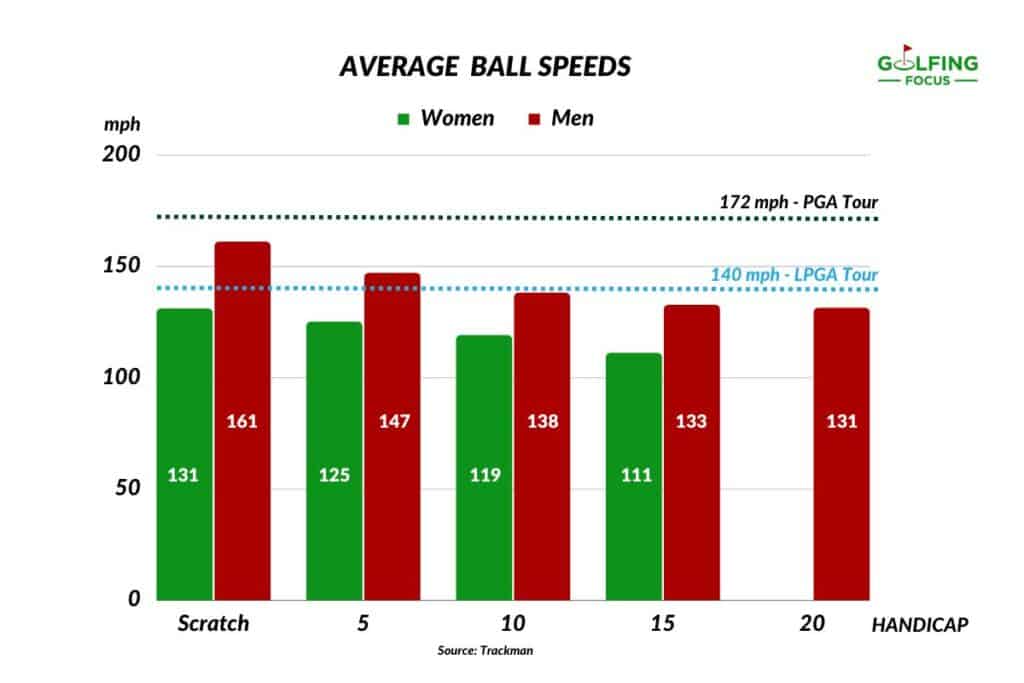
To put these ball speed numbers into a bit more context the average ball speed on the PGA Tour in 2022 was 171.86mph while for the 2023 season to date the average stands at 172.73mph.
Two-time world drive champion Kyle Berkshire meanwhile recently smashed an incredible ball speed of 236mph which although not an ‘official’ world record gives you an idea of the ball speeds being achieved by the very longest hitters who specialize in long driving.
These are ball speed figures the average golfer should not be overly concerned about though as they are ones achieved by golfers whose full-time job it is to hit the ball a long long way.
Therefore if you find yourself recording a ball speed of 135mph the stats amongst us mere mortals would say that is good.
And if you find yourself reaching the 150mph or even 160mph marks those are definitely fast ball speeds for amateur players.
Because if you are hitting those sorts of fast ball speeds the 300-yard driving distance may be a reality rather than a dream for you one day.
Just remember though. No matter what you hear or read only 0.1% of amateurs drive the ball over 300 yards on average so if you’re not reaching the high ball speeds you are in very good, and a lot of, company!
[Note – If you are interested in our complete analysis of the ball speeds achieved by PGA and LPGA Tour players check out our other article here.]
Final Thought
One final key thing to bear in mind when it comes to these ball speed stats.
While they are superbly accurate and are the result of a huge amount of work and the expertise of the major golf launch monitor manufacturers, they do not take into account one key factor that any regular golfer knows has a major impact on distances – the weather!
Trackman’s numbers for example were based on a golfer playing in 75ºF and 75% humidity conditions with no wind – in other words perfect conditions.
So although they provide a great and accurate guide don’t forget that the actual distances you find yourself driving the ball on the course are also going to be much affected by the conditions you are playing in no matter what your ball speed number and launch conditions are!
[Note – For a complete review of how much conditions can help a ball to fly further or reduce distance check out our great coverage of this topic here.]
Other top articles related to this topic:
- How Far Should Your Driver Swingspeed Go? 60 to 120 mph Guide
- What Should Your Driver Attack Angle Be? Try Not to Be Negative
- Average Driver Swingspeeds? COMPLETE GUIDE by Age, Handicap etc.
- How Do Pros Hit the Ball So Far? It’s Not About the Equipment!
- How Often Do Pros Hit Driver? Not As Much As You Think!
- How Far Do Pro Golfers Hit Each Club?
- What Driver is Most Used On the PGA Tour? Top 100 Player Analysis
- Most Popular Driver on LPGA Tour? Top 50 Player Guide
- How Far Should You Hit a Driver? FULL GUIDE By Age, Handicap etc.
- 10 Ways to Get More Distance off The Tee With & Without Speed!
- Where is the Sweet Spot on the Driver Face? Take the High Road
- Should Beginners & High Handicappers Use a Driver? Yes & Yes
- Going the Distance? How Far Should Beginners Hit A Golf Ball?
- How Far Should I Hit My Hybrids? 2 vs 3 vs 4 Hybrid Distances
- How Far Does a 3 Wood vs 5 Wood Go? Tee and Approach Shots!
- Do Distance Golf Balls Go Further? Marketing Matters
- Do All Golf Balls Go the Same Distance? Physics First
- Are Driving Range Distances Accurate? Golf Balls are a Problem
- What Affects Golf Ball Distance? Beware ALL the Uncontrollables!
RECENT ARTICLES
LEGAL INFORMATION
This site is owned and operated by Golfing Focus Limited, a private limited company whose registered office is in London, UK. Golfing Focus Limited is a participant in the Amazon Services LLC Associates Program, an affiliate advertising program designed to provide a means for sites to earn advertising fees (at no cost to you) by linking to Amazon.com. Golfing Focus Limited also participates in other affiliate programs with the eBay Partner Network, FlexOffers, CJ.com, Svorn and other sites and is compensated for referring traffic and business to these companies (again at no cost to you).
Our Socials

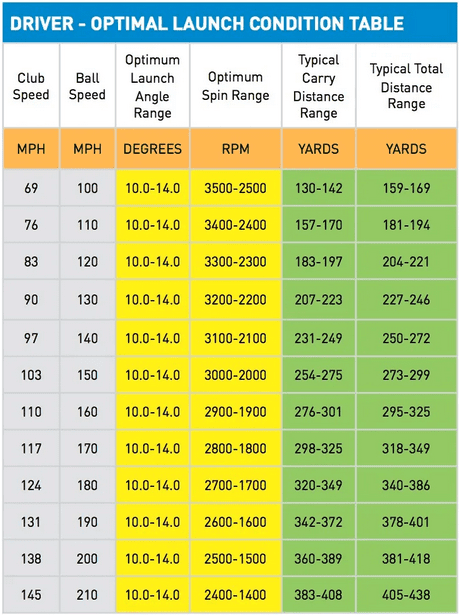
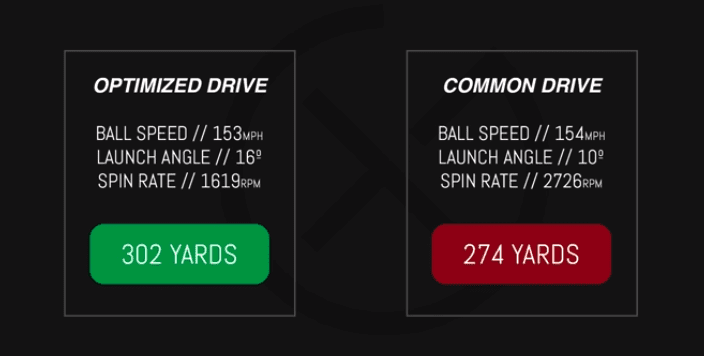
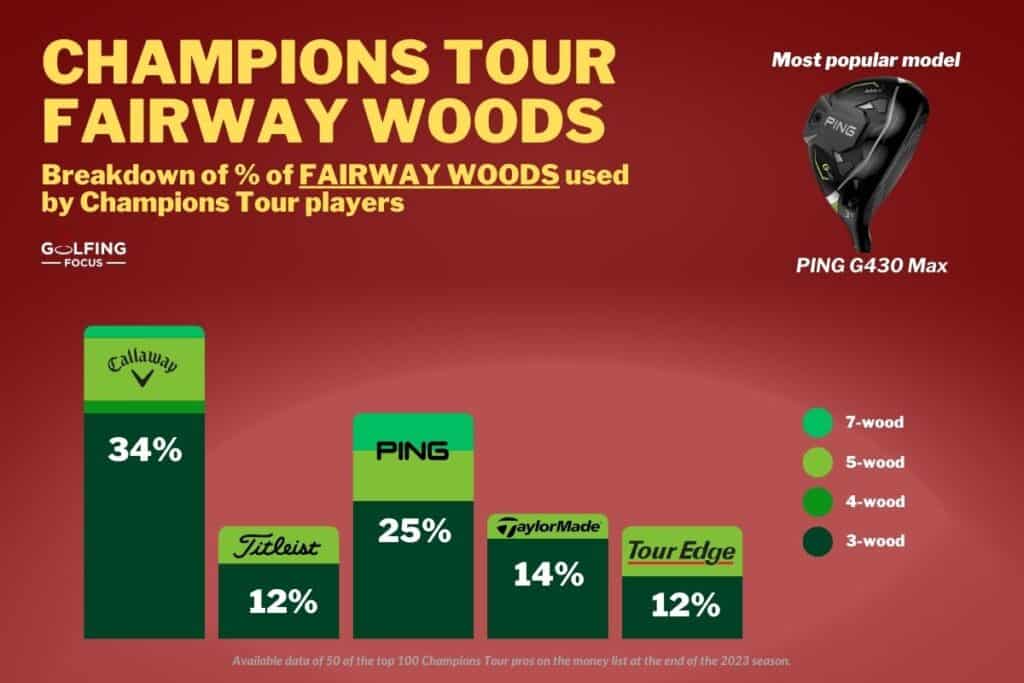
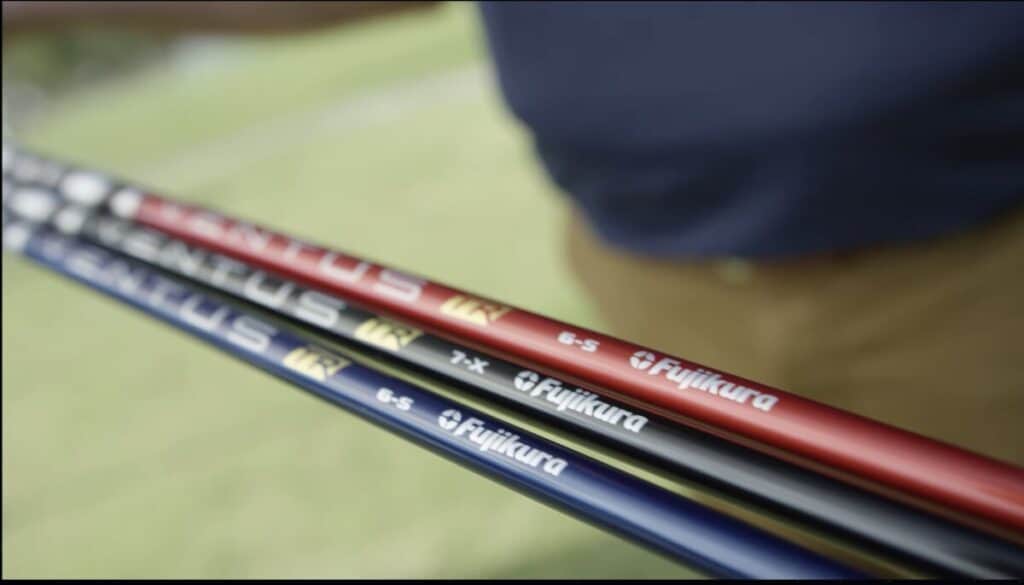
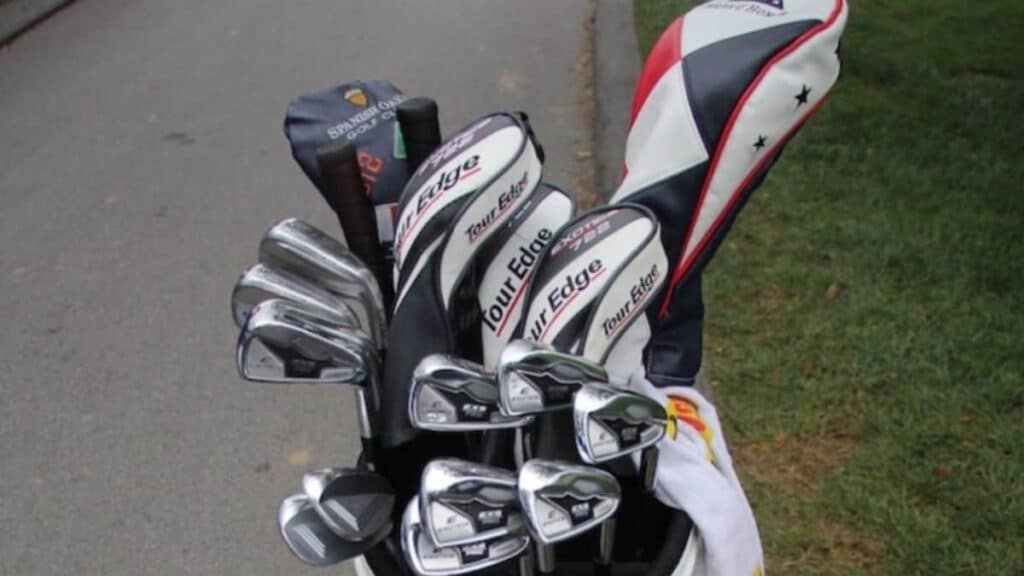
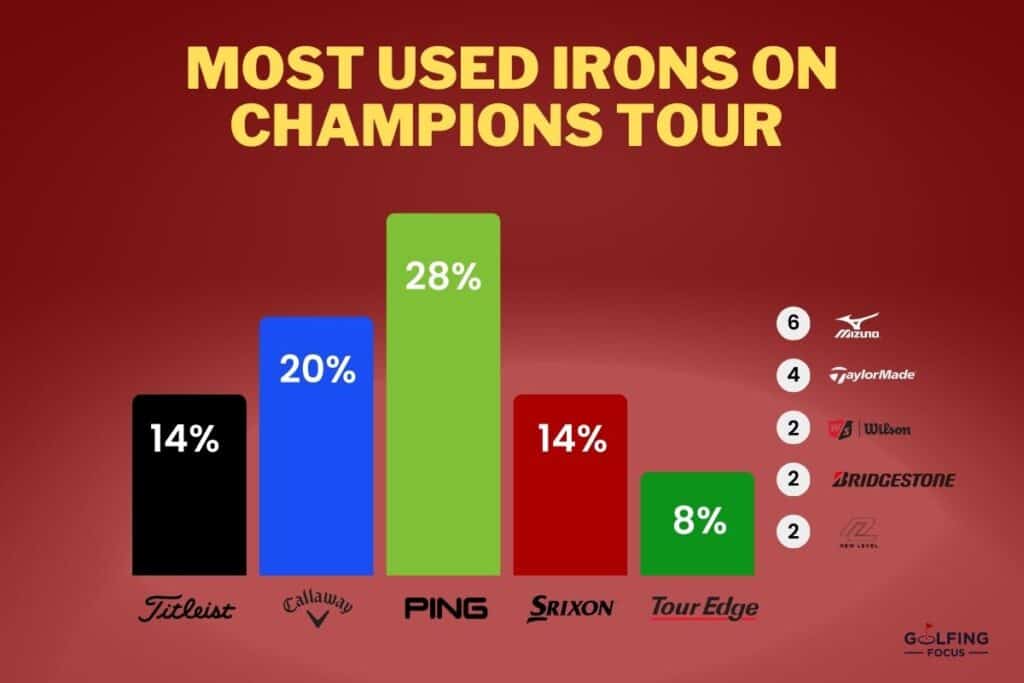

Leave a Reply